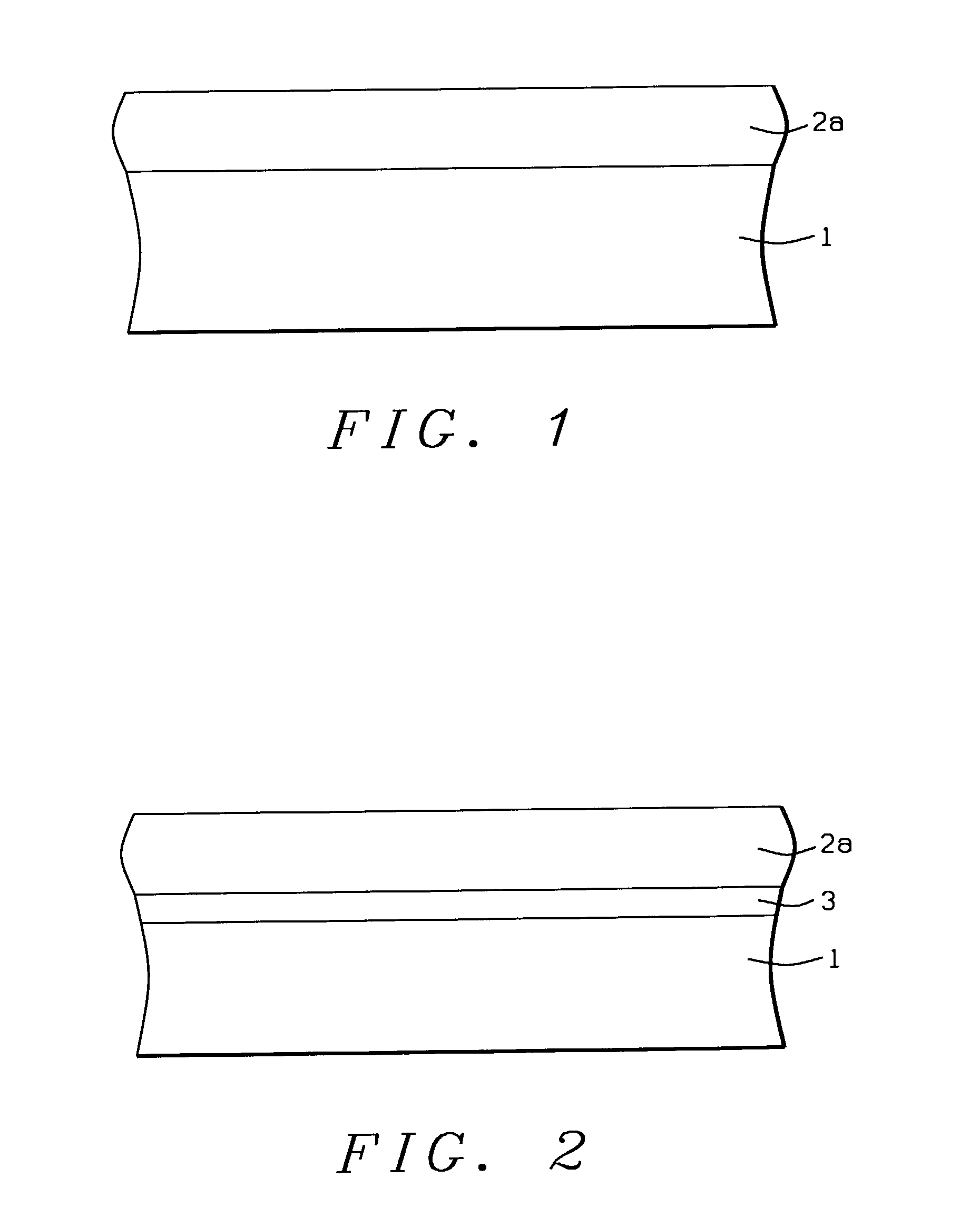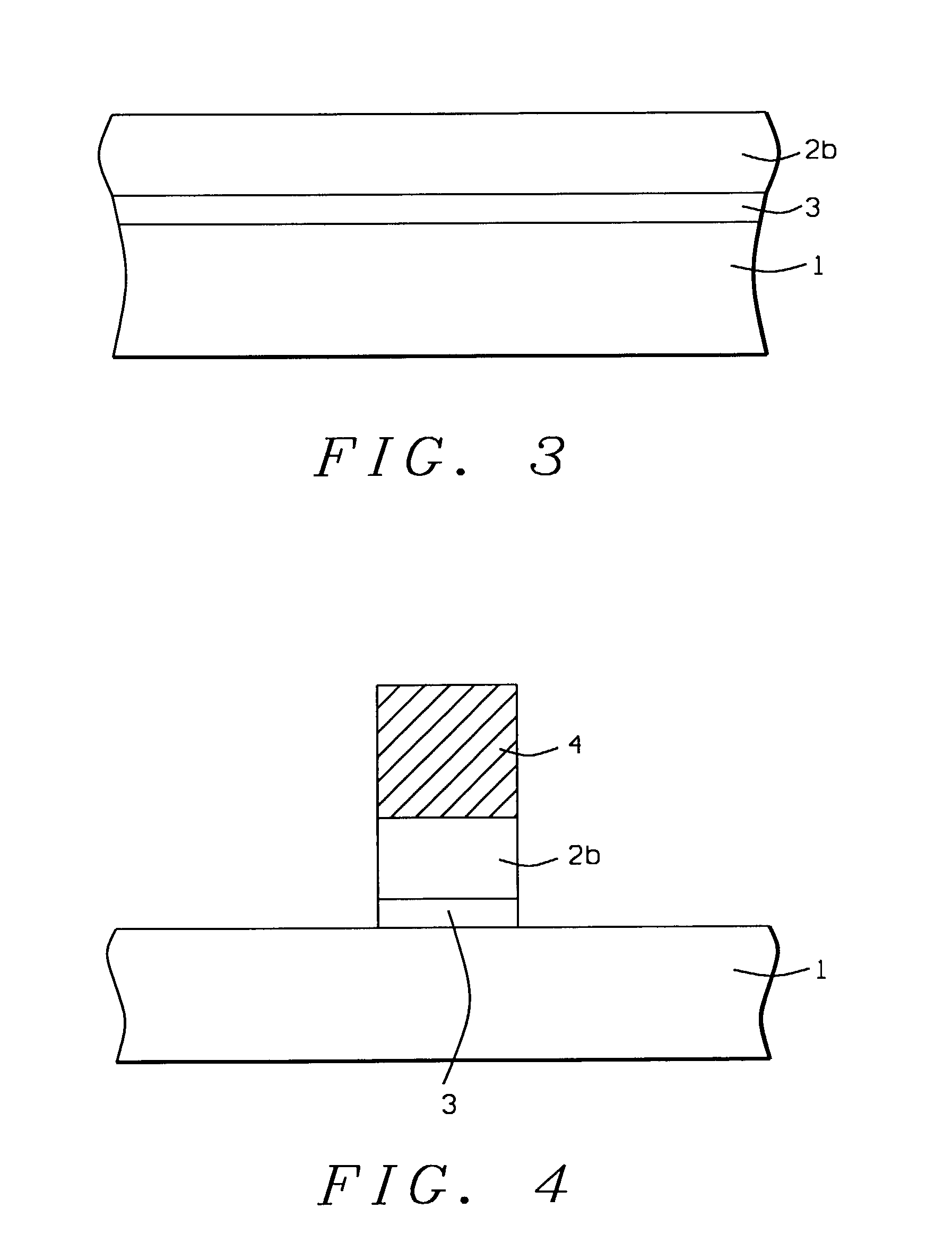Method of fabricating a gate dielectric layer with reduced gate tunnelling current and reduced boron penetration
a dielectric layer and gate technology, applied in the field of gate dielectric layer fabrication, can solve the problems of high gate tunnelling current risk, degraded gate insulator layer as well as a dopant depleted gate structure, and gate insulator layers, etc., and achieve the effect of reducing the risk of boron penetration and reducing the tunnelling curren
- Summary
- Abstract
- Description
- Claims
- Application Information
AI Technical Summary
Benefits of technology
Problems solved by technology
Method used
Image
Examples
Embodiment Construction
[0012]The method of forming a silicon nitride-silicon dioxide gate dielectric layer via a process sequence allowing reduced gate tunnelling current to be realized, in addition to presenting a barrier to eliminate boron penetration from an overlying boron doped polysilicon gate structure, will now be described in detail. Semiconductor substrate 1, comprised of P type single crystalline silicon, featuring a crystallographic orientation, is used and schematically shown in FIG. 1. Porous, or low density silicon nitride layer 2a, a silicon rich silicon nitride layer, is next deposited on semiconductor substrate 1, at a thickness between about 10 to 30 Angstroms, via low pressure chemical vapor deposition (LPCVD), or via plasma enhanced chemical vapor deposition (PECVD), procedures. The objective is to form a porous, or low density silicon nitride layer which will allow a subsequent thermal oxidation procedure to form a thin silicon dioxide layer on the semiconductor surface, via diffusio...
PUM
| Property | Measurement | Unit |
|---|---|---|
| thickness | aaaaa | aaaaa |
| temperature | aaaaa | aaaaa |
| thickness | aaaaa | aaaaa |
Abstract
Description
Claims
Application Information
 Login to View More
Login to View More - R&D
- Intellectual Property
- Life Sciences
- Materials
- Tech Scout
- Unparalleled Data Quality
- Higher Quality Content
- 60% Fewer Hallucinations
Browse by: Latest US Patents, China's latest patents, Technical Efficacy Thesaurus, Application Domain, Technology Topic, Popular Technical Reports.
© 2025 PatSnap. All rights reserved.Legal|Privacy policy|Modern Slavery Act Transparency Statement|Sitemap|About US| Contact US: help@patsnap.com



